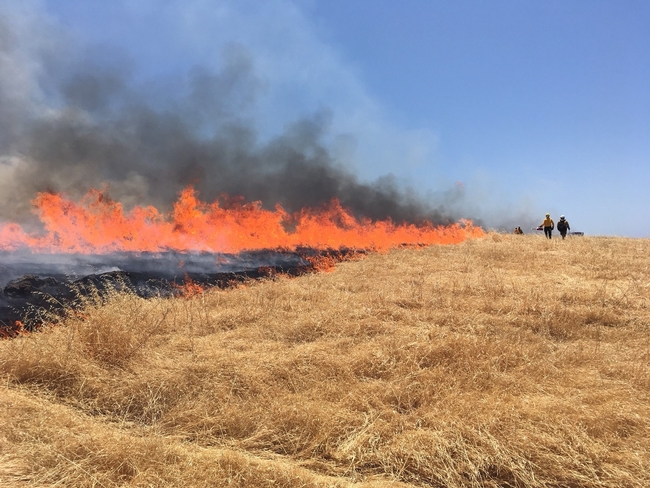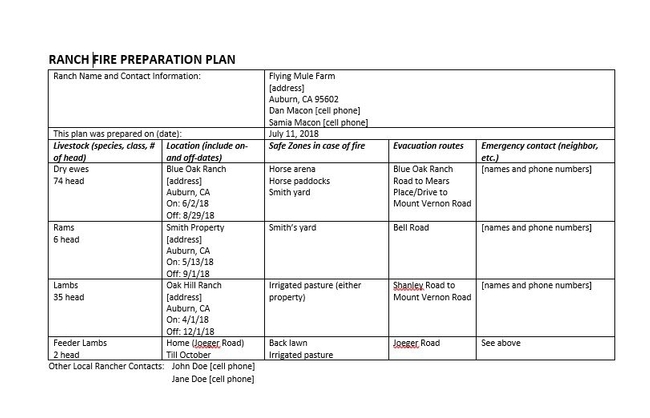
Posts Tagged: wild fire
Mendocino & Lake Counties Fire Recovery Info
The attached pdf, from Katie Delbar, provides initial info on assistance for ag producers with property in the recent Mendocino & Lake fires.
I've just begun to work on a smartphone app that I hope will make it easy to assess acreage damaged by the fires, economic value of the forage losses and reseeding requirements and cost assessments. I'll keep you posted on that progress.
Below are quite a few links for UC information on fire recovery that Ken Tate put together:
http://ucanr.edu/sites/postfire/
//ucanr.edu/blogs/blogcore/postdetail.cfm?postnum=18117
http://ucanr.edu/sites/forestry/Wildfire/
http://ucanr.edu/News/Wildfire/
http://www.cafiresci.org/announcements-source/category/postfirerecoveryucanr
http://anrcatalog.ucanr.edu/pdf/8446.pdf
http://ucanr.edu/sites/forageloss/files/74150.xls
http://ucanr.edu/sites/forageloss/files/74149.xls
http://cesutter.ucanr.edu/Fire_Information/
http://ucanr.edu/?blogtag=wildfire&blogasset=60503
http://cecentralsierra.ucanr.edu/files/220420.pdf
http://anrcatalog.ucanr.edu/pdf/8386.pdf
//ucanr.edu/blogs/blogcore/postdetail.cfm?postnum=19424
http://calag.ucanr.edu/archive/?article=ca.v007n03p3
http://cecentralsierra.ucanr.edu/files/224720.pdf
Redwood Complex Fire
Fire Season Is Not Over Yet
Local fire agencies have warned that fire season is not over. Cooler temperatures are a relief but not a stop sign for wildfire. As of last week, according to Chief Marc Bashoor at FireChief.com over 50 fires still rage in the Western United States, at varying degrees of containment, California taking the brunt of the damage. It is important that local farmers and ranchers continue to take necessary precautions against wildfires and other disasters. How can you be prepared? The following blog was written by Livestock and Natural Resource Adviser, Dan Macon.
Fire Preparation for Ranchers - Writing Down Your Plan
- Author: Dan Macon Posted: July 11, 2018. Updated Aug 27, 2018.

“In June, I wrote about preparing our ranches for fire (Fire Season is Here: Is Your Ranch Ready?). Since that time, we've seen large fires in ranching country. Each of these fires is a stark reminder that we live and raise livestock in a fire-prone landscape.
In July, a number of ranchers from Placer County met with law enforcement, fire and animal control officials to discuss the emergency preparation and response issues unique to commercial-scale ranching operations. As we talked, I realized that there are several factors that make planning for and responding to wildfire (and other emergencies, like flooding) challenging for these kinds of ranching businesses:
- Many ranches have livestock in multiple locations.
- Many leased pastures are simply pastures; there is no landlord or other resident on site.
- Because of this, the physical address of the pasture may not be readily apparent.
- Often, the number of livestock at a particular site may be more than can be easily evacuated in a single load in a stock trailer.
- Access during a fire may be difficult due to law enforcement road blocks. Since many of us lease pastures, gaining access (as opposed to staying at our home places in the event of an evacuation) can be problematic.
There are several things we can do to help address these issues. First, we should write down the locations where our livestock are grazing at least on a seasonal basis. What's the address? How many animals are at each location, and what classes of animals are there? What are the evacuation routes you'd be likely to use to get animals out of harms way? If you couldn't evacuate the animals, are there safe zones on or nearby the location where animals could be moved? Is there an on-site landlord or resident, or perhaps a neighbor, that you could call in an emergency situation? Finally, are there 2 or 3 nearby ranchers who could help you? Here's a sample of my one-page plan:
Access to leased pastures during a large-scale fire or other emergency may be more problematic. On Monday, we learned from CalFire that there is a liaison officer within the agency's incident command structure who can help facilitate access to livestock during a multi-day fire. Short-term access may be more difficult - we're working with our local emergency responders to find ways to address this while also protecting public and fire fighter safety.
What steps do you take to prepare for the possibility of wildfire? I hope you'll share your ideas and questions in the comment section below!
And finally, I'm working on organizing similar meetings with first responders in Nevada, Yuba and Sutter Counties. If you operate a commercial ranch, or lease land to a rancher in one of these counties, and would like to get involved, please contact me at dmacon@ucanr.edu.”
Watch for a follow-up blog that will focus on farmer preparation for wild fire or other emergency threats.

